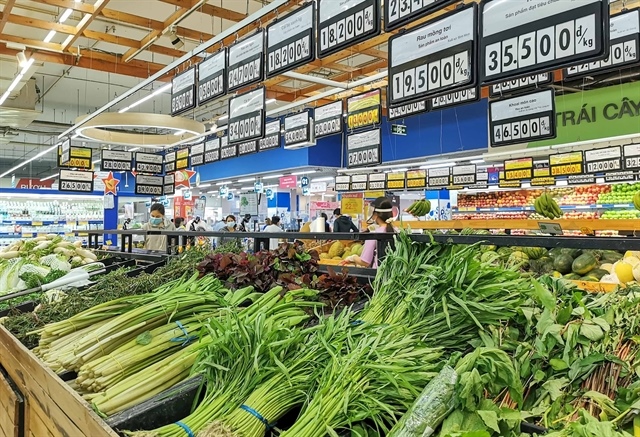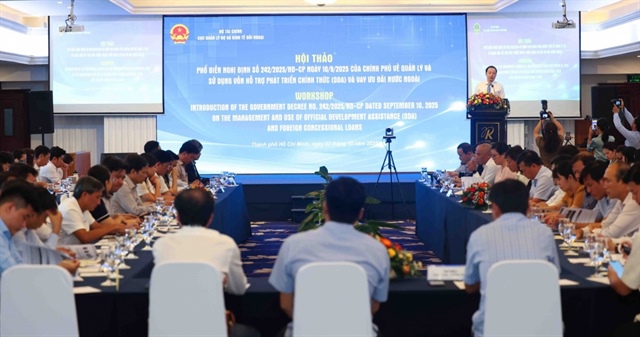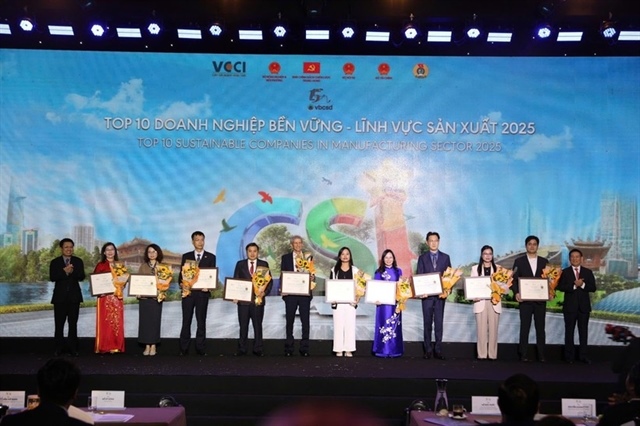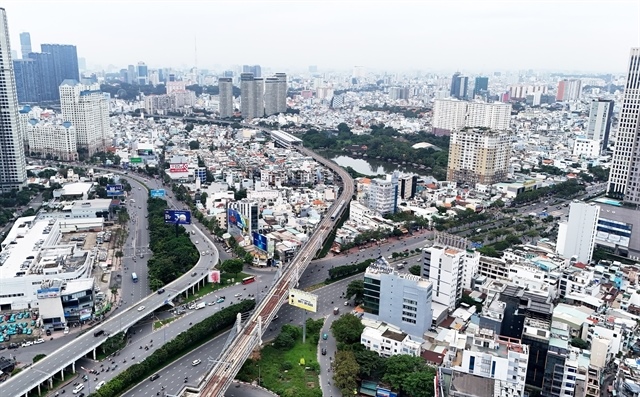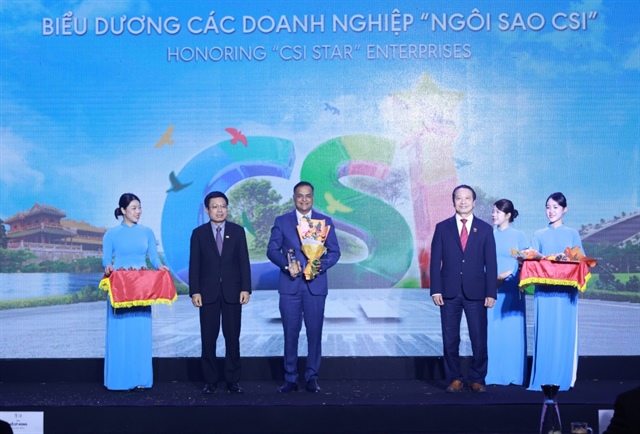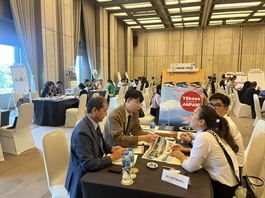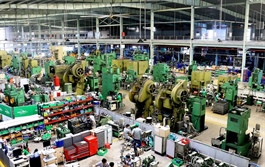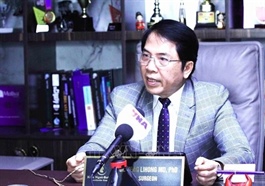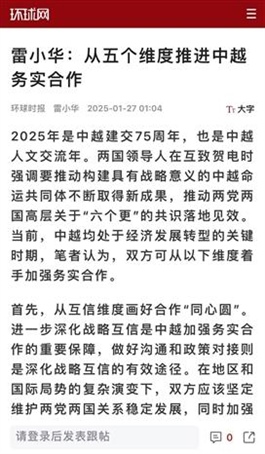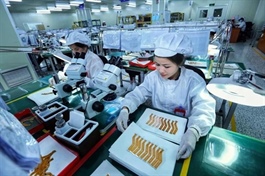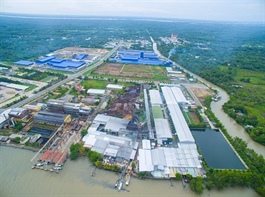Danang poised for development upswing with free trade zone model
Danang poised for development upswing with free trade zone model
Danang is set to become the first locality nationwide to embrace a free trade zone model, which will create an impetus to bring coastal city development to new heights.
In December, Danang People’s Committee submitted to the Ministry of Planning and Investment the plan for a free trade zone (FTZ), in which the roadmap for construction and development will be divided into two phases.
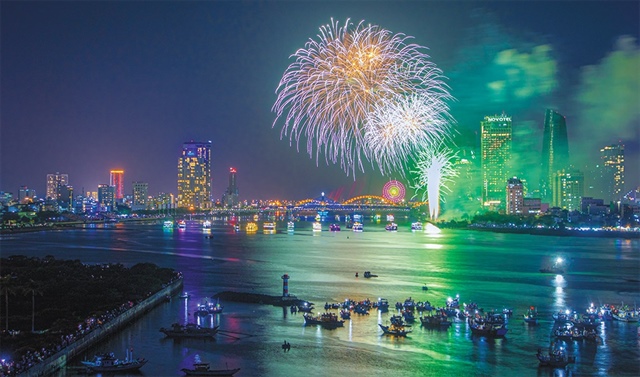
The Danang free trade zone will have a natural area of almost 2,350 hectares, including functional areas of production, logistics, trade, and services. It will be located across 10 separate locations connected to Lien Chieu Seaport and Danang International Airport, of which, there is a location in the reclaimed sea area covering about 300ha, oriented as an international logistics centre for transit goods. |
For phase 1, which covers the next four years approximately, Danang will focus on perfecting the management apparatus and completing operating regulations, along with building preferential policies to ensure transparent management and operation.
During this phase, a new Lien Chieu wharf and port logistics areas will be built to ensure the reception of ships up to 100,000 deadweight tonnage or larger, plus completing site clearance for all locations, particularly striving for site clearance completion for several locations before the end of 2026, and the others before the end of 2027.
In addition, the phase will see selection of a strategic investor for infrastructure of functional areas before the end of 2026 and 2027 depending on location; completed infrastructure funding and attracting secondary financiers to some functional areas before 2028; and relevant approvals issued before the end of 2029.
Finally, Danang will continue to study and evaluate in detail the sea encroachment area to determine the boundaries and orient the functions.
For phase 2, to be conducted after 2029, the orientation is to expand the FTZ at the Tien Sa port after converting the port function, and expand the urban reconstruction area at the current railway station in the city centre.
For capital needs, Danang plans to divide this into two phases. For phase 1 towards the end of 2029, the total estimated investment value inside the FTZ is set at about $1.5 billion. This includes site clearance costs of about $865 million and infrastructure costs of about $630 million.
In particular, the strategic investor will be responsible for infrastructure according to Resolution No.136/2024/QH15 on the organisation of urban government and piloting a number of specific mechanisms for the development of Danang.
For site clearance costs, according to regulations on land use fees and land rents, investors can advance this expense that will later be deducted from the land rent or be calculated in the capital, depending on each case. The capital structure of this phase therefore shall be sourced from equity capital, expected to help alleviate pressure on the state budget.
Golden opportunity
Regarding the method of capital mobilisation, the state shall balance budget allocation for infrastructure development projects to the boundary of the FTZ, responsible for site clearance or deducting land rent if the strategic investor carries out site clearance and infrastructure funding.
The strategic investor will put money into infrastructure inside the FTZ such as roads, water supply, drainage systems, electricity, and other common infrastructure. In addition, efforts will gear towards fully utilising incentives for them in light of Resolution 136, and proposing preferential policies on tax, land, cost support, and risk sharing to maximise resources from the private sector.
According to the city’s leadership, Danang is highly committed to building the FTZ model to realising the goal of bringing the city to international level. However, for the FTZ to be successful, there must be an open and flexible mechanism.
According to Tran Du Lich, a member of the National Monetary Policy Advisory Council, Danang needs to propose to the central government for permission to decide on some contents.
“It is necessary to have a steering committee to directly implement the plan, and there must be a specialised department to implement the FTZ with top priority in scheduling the work of city leaders to handle issues related to it,” Lich said.
According to calculations, the Danang FTZ will create great attraction and competitive advantages for the investment and expansion of trade, services, and many other fields. In particular, the special policy applied to Danang is also links to the future development roadmap of the Lien Chieu seaport and Danang airport.
Currently, Danang is implementing the construction of the seaport and calling for strategic investors to undertake infrastructure of the port, as well as of the Danang airport. Along with the FTZ, this is a prerequisite for Danang to become a regional and international freight transshipment centre, contributing to strongly attracting foreign direct investment into the city and the central region’s dynamic region.
Not only that, the FTZ model also provides a valuable opportunity to bolster the added value of the tourism and trade sectors in the north-central and central coastal regions in general, creating a chain of high-end products and services, leading the regional tourism activities to reach international standards.
Truly open and modern
With the significance of the FTZ, in the notice of conclusion of the first meeting of the steering committee for the implementation of Resolution 136 enacted on December 31, Prime Minister Pham Minh Chinh requested Danang to promptly institutionalise and issue full legal documents as a basis to ensure effective implementation of the resolution.
At the same time, it must study and propose new policies that are truly open, modern, and align to global trends and the conditions and circumstances of Vietnam and Danang in particular. The PM emphasised the need to focus on research and implementation to soon form three new driving forces for Danang’s development.
This encompasses establishing an innovation centre to motivate and inspire scientists, and building a regional financial centre.
Along with that, the PM said it is important to carefully study the current status and land recovery capabilities of each location to select the most feasible locations to immediately form an FTZ in the first phase, as well as potential locations that can be expanded in the future.
In particular, the prime minister agreed on continued research and new policies to be issued for Danang’s FTZ development in addition to those set up in Resolution 136 to ramp up appeal and ensure competitiveness with the region and beyond.


